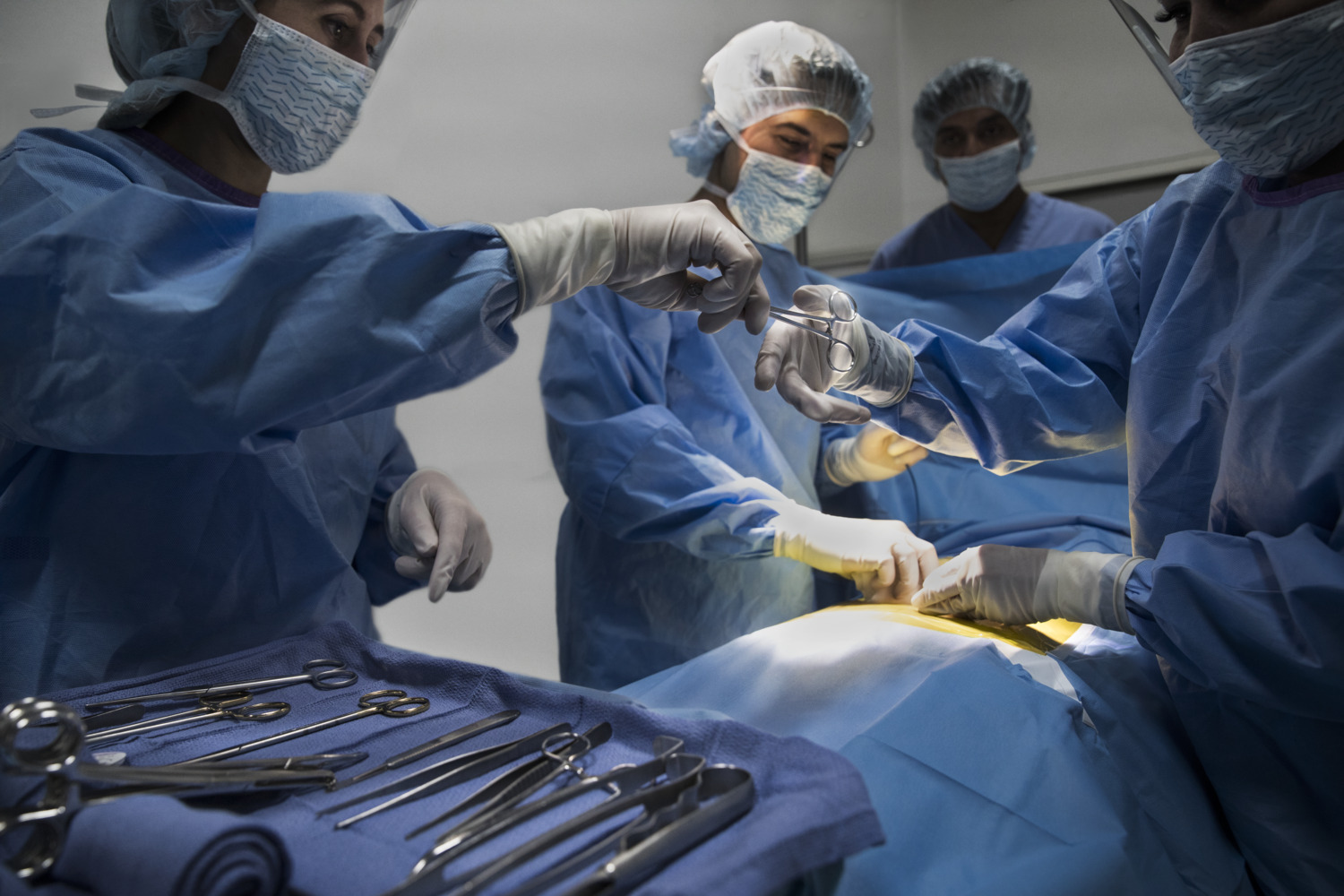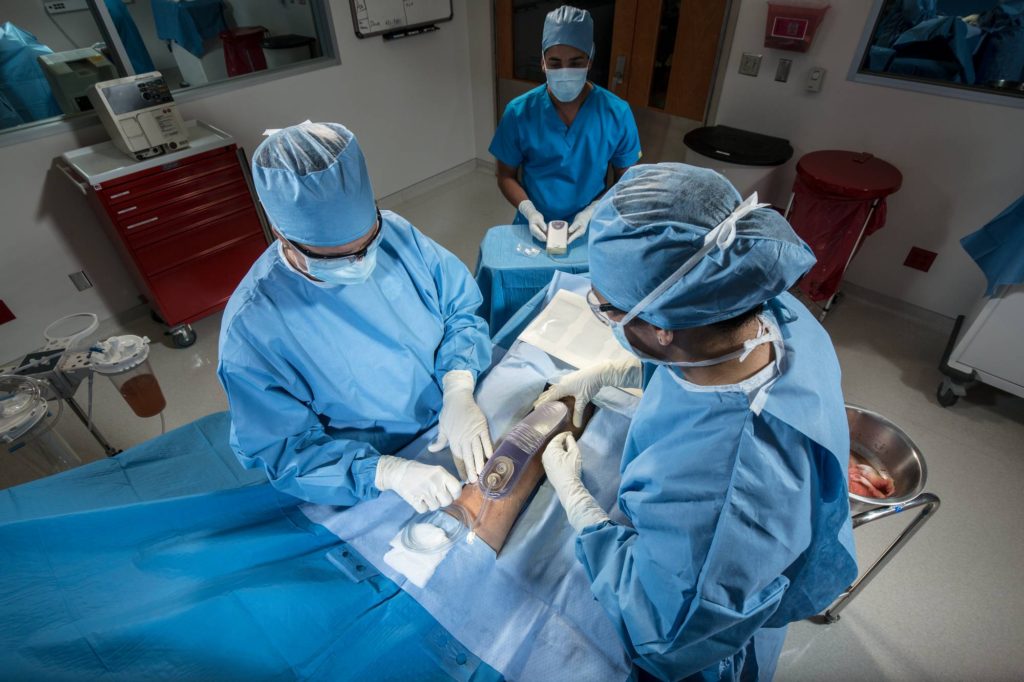
Since the ancient times, people have sought out treatments for wounds from herbal balms to vinegar to leeches. During the Civil War, wounds from injuries and amputations were treated with honey, grease or ointments and then covered in lint or cotton dressings. Medical progress has advanced in leaps and bounds in more recent decades. Recent inventions in the field of wound care, often beginning with ideas from clinicians themselves, have dramatically improved how we care for wounds and incisions.
During my surgical training over 20 years ago, I personally witnessed one of the greatest technological advances in the treatment of complex open wounds. V.A.C.® Therapy (vacuum assisted closure) therapy became available when I was a resident and it dramatically changed how we care for patients with significant wounds. More recently, negative pressure for the management of closed incisions has been a phenomenal advancement that has demonstrated the ability to assist in reducing surgical site infections in certain incisions that are at high risk for infection.
These therapies have made a big difference in treating both acute and chronic wounds and for higher risk surgical incisions. For example, in my own practice, if a patient received an abdominal panniculectomy there was a >50% risk that the patient would have a wound related complication – now, it’s very rare to see any complications whatsoever in these same cases. We can have much greater confidence in reducing complications and we continue to make further advances.
Helping the healing during COVID-19
We have always relied on the body to do the magic of healing the skin following surgery. As surgeons, we carefully close incisions with sutures, staples or glue and try to return the skin as much as possible to its previous state. Beyond that, we have to allow the body to do what it does naturally – heal itself. There is always the risk, though, that something may go wrong.
You may have a patient that’s at higher risk due to the type of surgery or because of existing comorbidities including diabetes or obesity. To reduce the risk of fluid buildup, skin necrosis, hematoma or surgical site infections, we can do more than put the edges of the skin together and expect the body to heal itself. We have the advantage of the latest care that technologies and treatments to improve how we care for wounds and closed incisions.
During COVID-19 we also have an even greater need to move patients out of the hospital as quickly as possible – to keep beds available and because patients want to be at home as well. We want even more confidence that patients will go home and stay there; that they will heal well and not have complications requiring a return to the hospital.
One solution that is more important now than ever is having dressings that protect incisions for a longer period of time so patients don’t have to return to the hospital or clinic for care. PREVENA™ Therapy offloads tension on the incision and allows for the patient and the doctor to let it heal without interference. It’s covered so the patient can’t see it or touch it and they can still shower with it on.

In one study1, women who received cesarean sections and had their incision managed with PREVENA Therapy ™used less narcotics. They also reported a reduction in pain compared to using other dressings. We’ve observed a reduction in edema in patients who use PREVENA Therapy ™, which is especially important for surgery of the legs or feet such as certain types of orthopedic surgery.
Working side-by-side to improve care
Most of the big changes that have been made in medicine come from the ideas of doctors and nurses. We listen to the people practicing on the front lines, caring for patients and that is how we come up with ideas for new and better products.
We ask, “How can we help your patients?” That’s how it all starts. We take feedback seriously and we become part of the experience. We are often right there in the hospitals when there are life-threatening wounds to help troubleshoot and to help partner on management plans. We work shoulder to shoulder with the care team, helping them to continue to improve patients’ lives.
Resources
Want to learn more about the latest advances in patient-centered science from 3M+KCI?
Managing wounds:
V.A.C. VERAFLO™ Therapy has dramatically improved the management of open wounds. It provides wound cleansing without having to remove the dressing exposing wound to potential contamination. Evidence has shown it helped improve granulation tissue formation to promote wound healing – its introduction was a massive change in how we have been able to treat wounds. The biggest “wow” reaction comes at the first dressing change when you can see how the wound has filled in.
Protecting. Beyond:
The SARS-CoV-2 pandemic has made protecting against risk a priority. Learn how you can implement low-touch care with PREVENA Therapy™.
NOTE: Specific indications, limitations, contraindications, warnings, precautions and safety information exist for these products and therapies. Please consult a clinician and product instructions for use prior to application. Rx only.
References:
1 Gunatilake R, Swamy G, Brancazio L, et al. Closed-incision negative-pressure therapy in obese patients undergoing cesarean delivery: a randomized controlled trial. Am J Perinatol Rep. 2017;7:e151-e157.
